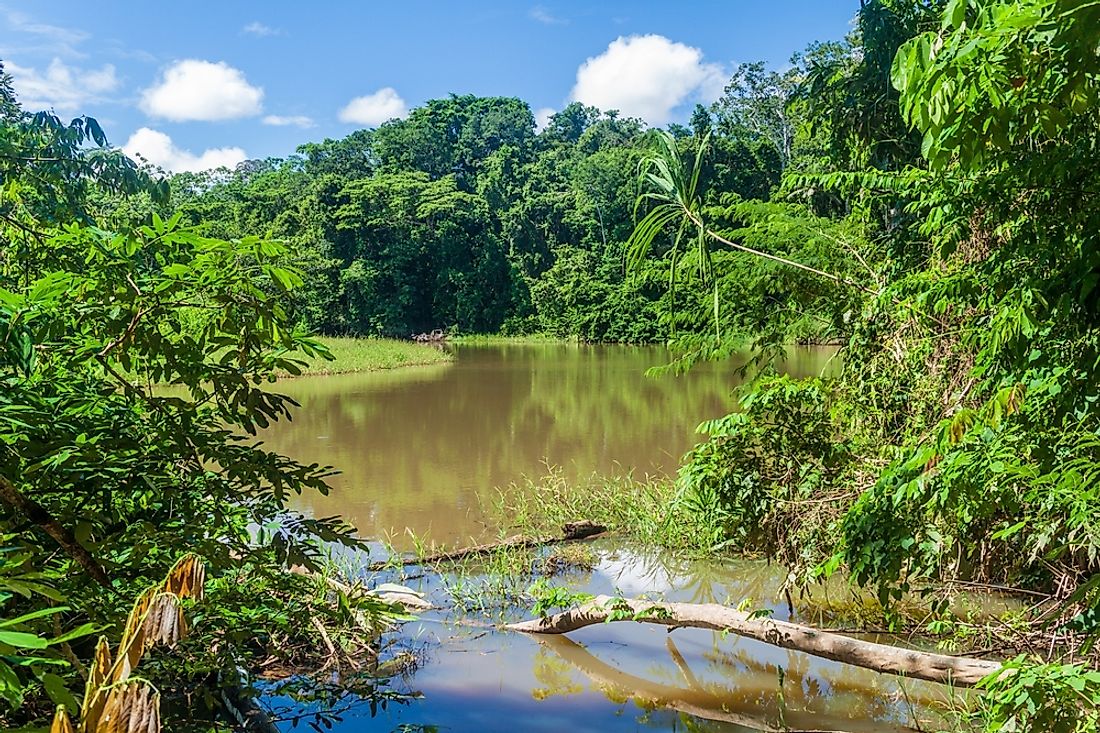Madidi National Park, Bolivia

Established in 1995, the Madidi National Park spans an area of around 18,958 square kilometers in the upper Amazon River basin in Bolivia. It is home to a great diversity of flora and fauna and is one of the largest protected areas in the world. The national park and its neighboring protected areas encompasses a varied landscape of incredible natural beauty, including towering snow-clad peaks of the Andes, cloud forests, and lush green rainforests on the river basins. The height of this landscape ranges between 200 to 6,000 meters above sea level. The Madidi National Park can be accessed from the small North Bolivian town of Rurrenabaque via a ferry ride on the Beni River.
4. Historical Role
Rosa Maria Ruiz , a conservationist and founder of Eco-Bolivia, was the pioneering individual whose hard work led to the establishment of the Madidi National Park. She, with the help of National Geographic and the well-known Cornell University ornithologist, Ted Parker, brought to the attention of the world the need to save the biodiversity of the region. The efforts bore fruit and the threat of construction of a hydroelectric dam in the area was averted. Ruiz then started the organization, Madidi Travel, which is engaged in attracting tourists to the national park, to generate sustainable sources of income for the locals to encourage them to take an interest in the conservation of the national park.
3. Ecotourism and Education
The Madidi National Park is now being heavily promoted for ecotourism and environmental education. A 6-hour boat ride from Rurrenabaque transports tourists to the national park. The locals of the region operate the boats, eco-lodges, and other tourist facilities in the area to assist the tourists through their journey. Since the Madidi National Park has extremely dense forests, dangerous predators and toxic species, it is recommended that tourists do not venture out alone to these forests but tour the park with licensed guides or as part of organized tours. The best season to visit the park is between October and April.
2. Habitat and Biodiversity
The climate at the Madidi National Park varies with elevation with cold temperatures experienced in the alpine regions of the Andes, temperate weather at the intermediate elevations and hot, tropical weather prevails in the lower river basins with rainforests. Over 20,000 plant species cover the landscape of the national park. The incredible diversity of avian fauna in the park of 1,254 species represents 14% of the world’s avian species. A large number of mammalian (272), fish (496), amphibian (213), reptilian (204) and over 120,000 invertebrate species also inhabit the park. Some of the notable mammals of this park include spectacled bears, pumas, jaguars, and sloths. An endemic species of monkeys, the titi monkey, was discovered at the park by wildlife biologist Dr. Robert Wallace.
1. Environmental Threats and Territorial Disputes
For long, conservationists at the Madidi National Park have fought against significant challenges threatening the integrity of the park. Since 1998, the proposal of building a massive dam, as part of the Bala Dam Project, at the Beni River has been pending. The proponents of the dam building appear to be determined to build the dam but the diligent work by the conservationists have still managed to keep them at bay. Once the dam is built, most species of the Madidi National Park will lose their habitat as there will be large scale flooding of the area and catastrophic consequences will result. Another major threat facing the Madidi National Park is related to the proposed construction of the Apolo-Ixiamas Road through the park. The road will allow the locals to access the park for logging and clear vegetation for agriculture and human habitation. This would wreak havoc on the flora and fauna of the park and degrade its stable ecosystem.







